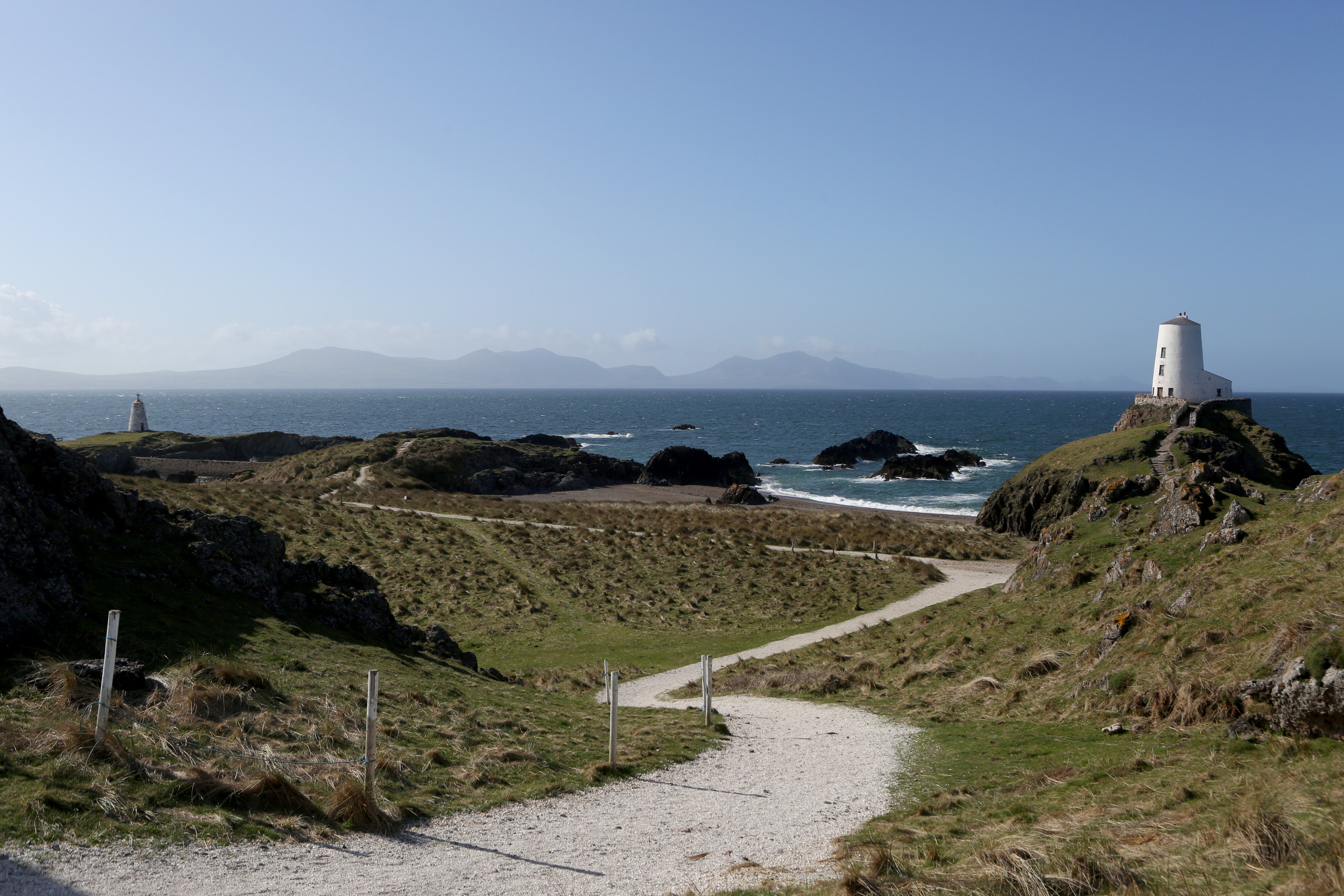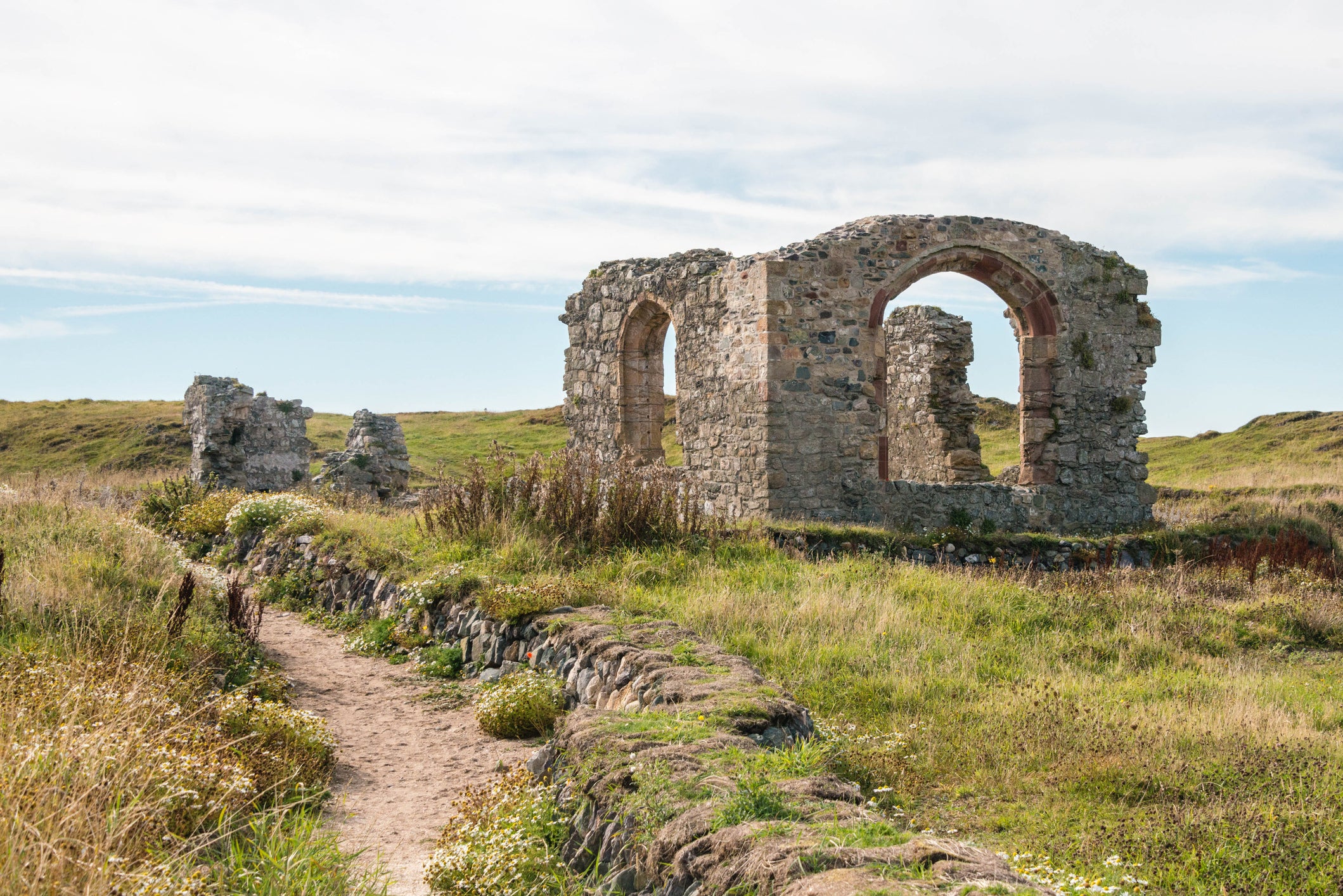Forget Valentine’s Day – St Dwynwen’s Day is the true day for lovers
David Barnett gets to the heart of the Welsh patron saint of lovers


Valentine’s Day approaches, with its heart-shaped chocolates and pink cards; its overpriced roses and declarations of love penned by Hallmark’s army of bards. And something to do with a Roman priest? Or a bishop? Secret weddings?
Anyway, forget all that; for 25 January, is the true day for lovers. It is the day of Santes Dwynwen, Wales’s saint of lovers, and she truly is a more tragic and romantic figure that we can properly get behind.
St Dwynwen is honoured in Wales every year – especially on Ynys Llanddwyn (Ynys means “island”), off the coast of Anglesey. It’s a tidal island, meaning it is sometimes connected to the mainland, except at high tide.
Jane Harris from the Visit Wales tourism board told me: “Llanddwyn Island is named after St Dwynwen, a 4th century Welsh princess who lived in what is now the Brecon Beacons National Park. Unable to marry her beloved, Dwynwen was visited by an angel who made all her dreams come true.
“Visitors often visit the remains of her church and well at Ynys Llanddwyn, where she prayed for true lovers to meet one another. This is one of the most romantic spots in Wales, with a beach backed by sand dunes, lighthouses and a forest kept entirely untouched.”
That’s the soundbite, but the story of St Dwynwen is infinitely more layered and nuanced. And who better to tell it than Owen Staton, a Welsh storyteller, performer and podcast host, whose passion is preserving the ancient tales of Wales.
He runs two podcasts, Time Between Times and Spectre of the Sea, with his lilting voice, which is somehow simultaneously soothing and engaging.

For now, let us allow Owen to tell the story of Santes Dwynwen (and if you could imagine some kind of cross between Richard Burton and Michael Sheen while reading Owen’s following words, then you might be close to the full effect):
In the chaotic cauldron of fifth-century Wales there lived a warlord called Brychan Brycheiniog. Father to many daughters he promised them all to the local Princes of Wales in an attempt to secure alliances and wealth for his prospering Kingdom. The fairest daughter of all was called Dwynwen. It was said that her eyes were as bright as the sun, and her hair the colour of gold, and many were the princes who desired her as their wife.
Brychan Brycheiniog arranged a wedding match between Dwynwen and a neighbouring lord who had previously been an enemy. Both warlords celebrated the match; but Dwynwen had other ideas.
She was in love with a young poor local lad called Maelon Dyfodrull, and as the sun set at the Time Between Times she defied her father and revealed her love for Maelon.
What was once a little-known tale is once again on the tongues of many people in Wales, and that can only be a good thing
Brychan was furious and threw Dwynwen into his dungeon. Refusing all food and drink, Dwynwen prayed for guidance from God.
In the dark heart of the night, a bright light illuminated her cell, revealing an angel sent from Heaven in answer to her prayers. The angel brought Dwynwen a potion, stating that if she was to drink it she would forget all about her love for Maelon and be freed from her torment forever.
Although her heart was filled with sadness, Dwynwen agreed and gulped down the potion which the angel said would take her memories of Maelon away one by one. The angel also said that to secure that she would not see Maelon again, he would be turned into a block of ice on the mountainside, his heart frozen so that he could not love another. Because Dwynwen had drunk the potion, she would also be granted three wishes before her memory faded.
Quickly Dwynwen seized the moment and called out her wishes so that God could hear them. Horrified at the fate of her true love, her first wish was that he be thawed from his block of ice and be able to live a normal life.
Her second wish was that the people of Wales would never know the heartache that she had endured and would only know happiness in love.
Her third wish was that she would never fall in love again and would devote her life to God.

Stunned by the selflessness shown by Dwynwen, the angel released her from the prison and carried her to the isle of Llanddwyn where she established a church there and lived the rest of her life as a nun.
Her story and her life are celebrated on 25 January every year, and the remains of her church are still visited by many.
***
If there’s a dry eye in the house after that, then truly you have a heart of ice (just as was meant to be Maelon’s fate). Take that, St Valentine, whoever you are.
“There are of course many similarities between Dwynwen and St Valentine,” says Staton. “The most important being that they are both in their own way martyrs who sacrificed themselves in the name of love.
“The legend of St Dwynwen is based solidly on Dark Ages history, and some of the figures involved can be traced here. Also, the founding of the church on Llanddwyn island gives it some sort of grounding in early medieval history. There are of course similar tales all around the world, and there can be no doubt that it was probably based on other oral traditions from and even earlier period.”
If there is to be a fight between Valentine and Dwynwen, then it’s a fight I must confess to having a dog in. Or, perhaps, a seal.
A year or so ago I was starting work on my next novel, published in June by Orion and called There Is A Light That Never Goes Out. I knew I wanted it to be set on a remote island, and that there must be a lighthouse on it. And then I heard the story of St Dwynwen, and it all slotted into place.
For my own love story, I moved Ynys Llanddwyn a few miles further off the coast of North Wales’s Llyn Peninsula, and renamed it Ynys Dwynwen. It became the home of disaffected drifter Martin, who takes up a job as a lighthouse keeper after his life goes down the pan, not guessing that it would bring him back into contact with his long-lost sweetheart. There is also a seal called Bruce.
I tried to honour the legend of St Dwynwen in the book, and hopefully bring it to a wider readership beyond Wales when it’s released in summer. Within the borders of ancient Cambria, St Dwynwen’s story is growing in popularity.
Staton says, “The importance of St Dwynwen seems to increase year on year, and her popularity is now at a level unheard of for many years. Increased awareness of Welsh traditions taught in schools and the growth of the Welsh language and its oral histories seems to have secured a healthy future for this wonderful story and the traditions that surround it.
“Over the years the story has become better known in Wales as the popularity of the day has grown. Now many children are taught the tale in school and it is popular amongst storytellers like myself. What was once a little-known tale is once again on the tongues of many people in Wales, and that can only be a good thing.

“The Welsh press and local TV often now mention the tale on or around the 25th of January, and even large nationwide stores have started to produce cards and products commemorating Dwynwen in a similar way to Valentine’s Day. These days there is a wide variety of food and merchandise available to commemorate the story and the life of Dwynwen and many Welsh people choose to commemorate this day above the 14th of February when they celebrate their love for each other.”
As well as being the patron saint of lovers, Dwynwen is also the patron of farm animals. Back in 2007, a group of Denbighshire farmers celebrated the day by turning their milk bottles into lonely hearts ads with pictures of themselves on the bottles, inviting people to Fancy A Farmer (whether Dwynwen’s magic worked is, alas, unknown).
When Dwynwen set up her convent on Ynys Llanddwyn – the remains of which can still be seen and visited – she also established a holy well there, which is thought to be home to sacred fish which can predict if a relationship will succeed. Should you visit the well and the fish are visibly active in its deep waters, that is said to be a sign of a faithful husband. Dwynwen – her name translated means “she who leads a blessed life” – had a thing for wells, it seems; there’s another wishing well nearby called Crochan Llanddwyn, meaning Llandwyn’s Cauldron, located in a rabbit warren between the island and Newborough.
According to folklore this well also has news for lovers, though perhaps less intense than a firm decision on a man’s fidelity. If visitors see the water boiling, then love and good luck is sure to follow.
Among the growing number of cards produced for St Dwynwen’s Day in Wales, a traditional gift has always been a Welsh love spoon. In 2007 (the year of the frisky farmers), a 44ft St Dwynwen love spoon was carved – the biggest ever made.
There’s something about Dwynwen that feels more comfortable with having her as the patron saint of lovers than old Valentine, somehow. For starters, her story seems more solid and less vague. The Valentine story could focus on one of at least two – possibly more – Valentines of the Fifth Century period. And if you delve into the actual stories, there’s not actually a great deal in there about actual love.
Valentine’s Day itself could just be one of those co-optings of pagan festivals by Christianity – in this case, Lupercalia, a Roman festival celebrated on February 15th (which was, by all accounts, a rather raunchy affair).
Given we know so little about Valentine in reality, and so much about St Dwynwen, perhaps it’s time that we adopted her as our official patron saint of lovers beyond the borders of Wales. Perhaps like them we could mark today, 25 January, as the true romantic celebration.
“Having a saints day that celebrates love in the darkest heart of winter can only be a good thing in my opinion,” says Owen Staton. “Long may the story be told and lovers meet in the name of Santes Dwynwen.”
Join our commenting forum
Join thought-provoking conversations, follow other Independent readers and see their replies
Comments





Bookmark popover
Removed from bookmarks